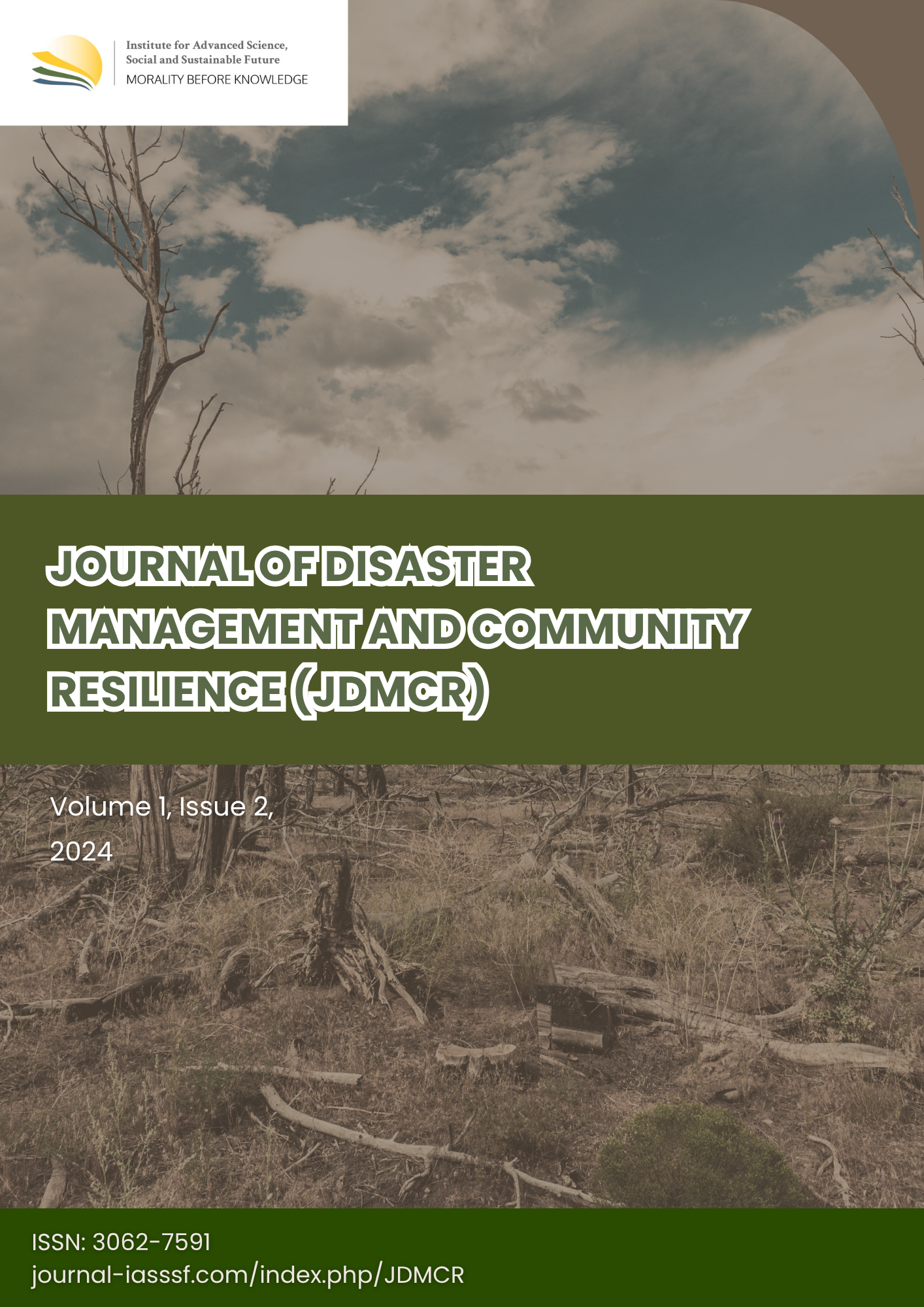Pengaruh persepsi risiko wisatawan terhadap kesiapsiagaan menghadapi bencana di Taman Hutan Raya Ir. H. Djuanda
DOI:
https://doi.org/10.61511/jdmcr.v1i2.1240Keywords:
disaster preparedness, risk perception, Taman Hutan Raya Ir. H. DjuandaAbstract
Background: The Taman Hutan Raya Ir. H. Djuanda is one of the leading natural tourist attractions in the Bandung area. However, alongside its various interesting tourist spots, the Taman Hutan Raya Ir. H. Djuanda is also a disaster-prone area. This certainly warrants special attention, as tourists visiting the park need to have a good risk perception to develop effective disaster preparedness. This research aims to examine the influence of tourists' risk perception on disaster preparedness. Methods: A quantitative descriptive method was used in this study, with data analysis through linear regression techniques using IBM SPSS. Data was collected through the distribution of questionnaires to 500 visitors. Finding: The findings reveal that tourists' risk perception has a positive impact on disaster preparedness by 30%, while the remaining 70% is influenced by other factors not covered in this study. Conclusion: These results indicate that if tourists' risk perception, reflected through their vigilance when visiting disaster-prone areas, increases, their preparedness for potential disasters will also improve. Novelty/Originality of this article: Therefore, to continuously enhance tourists' risk perception, it is hoped that this research can assist the management of the Taman Hutan Raya Ir. H. Djuanda in designing educational programs related to disaster risks and continuously improving security policies, thereby increasing tourists' preparedness for potential disasters.
References
Akbar, Z., Suryaratri, R. D., Tri, Y., Gumelar, G., & Ariyani, M. (2020). Disaster Risk Perception and Household Disaster Preparedness: Lesson Learned from Tsunami in Banten. IOP Conference Series: Earth and Environmental Science, 448(1). https://doi.org/10.1088/1755- 1315/448/1/012099.
Cai, J., Hu, S., Sun, F., Tang, L., Fan, G., & Xing, H. (2023). Exploring the relationship between risk perception and public disaster mitigation behavior in geological hazard emergency management: a research study in Wenchuan county. Disaster Prevention and Resilience. https://doi.org/10.20517/dpr.2023.26.
European Commission. (n.d.). European Civil Protection and Humanitarian Aid Operations : Disaster Preparedness. Retrieved from https://civil-protection-humanitarian-aid.ec.europa.eu/what/civil-protection_en.
Husna, C. (2012). Faktor-Faktor Yang Mempengaruhi Kesiapsiagaan Bencana Di Rsudza Banda Aceh Influencing Factors on Disaster Preparedness in RSUDZA Banda Aceh. Idea Nursing Journal, 3(2), 10–19. https://doi.org/10.52199/inj.v3i2.1578.
Kaplan, L. B., Szybillo, G. J., & Jacoby, J. (1974). Components of perceived risk in product purchase: A cross-validation. Journal of Applied Psychology, 59(3), 287–291. https://doi.org/10.1037/h0036657.
Kutanegara, P.M. & Susanti, R. (2019). The Importance of Disaster Response Awareness for Tourism Object Managers in West Sumatra. International Journal of Tourism, Heritage and Recreation Sport CCS, 1(2). http://ijthrs.ppj.unp.ac.id.
Lechowska, E. (2018). What determines flood risk perception? A review of factors of flood risk perception and relations between its basic elements. Natural Hazards, 94(3), 1341–1366. https://doi.org/10.1007/s11069-018-3480-z.
Mariam, I., Budhiana, J., Permana, I., Dewi, R., Rahmanishati, W., Noviyanti, L., Novianti Utami, R., Sanjaya, W., Rahman La Ede, A., & Unmehopa, Y.F. (2021). Knowledge, Attitudes, Disaster Training and Self Efficacy on Disaster Preparedness. Research Horizon, 1(5), 179–188. https://doi.org/10.54518/rh.1.5.2021.179-188.
Nurjanah, N. & Rezza, A. M. (2021). Disaster Preparedness and Risk Perception: A Study in Bandung. Tourism and Sustainable Development Review, 2(1), 32–38. https://doi.org/10.31098/tsdr.v2i1.34.
Rittichainuwat, B., Nelson, R., & Rahmafitria, F. (2018). Applying the perceived probability of risk and bias toward optimism: Implications for travel decisions in the face of natural disasters. Tourism Management, 66, 221–232. https://doi.org/10.1016/j.tourman.2017.09.013.
Sugiyono. (2013). Metode Penelitian Kuantitatif, Kualitatif, dan R & D. Penerbit Alfabeta.
Sumarna, A. (2010, Februari 14). Sekilas Tahura Ir. H. Djuanda. Retrieved from https://ciburial.desa.id/sekilas-tahura-ir-h-djuanda/.
Supriyati, A.L. (2023, Januari 7). Kronologi Pohon Raksasa Tumbang di Tahura Bandung, Kejadian Berlangsung saat Subuh. Retrieved from https://prfmnews.pikiran-rakyat.com/bandung-raya/pr-136080982/kronologi-pohon-raksasa-tumbang-di-tahura-bandung-kejadian-berlangsung-saat-subuh?page=all.
Suryati, I., Murni, L., & Loqiana, G. A. (2023). Hubungan Persepsi Risiko Bencana dan Keterikatan Tempat terhadap Tingkat Kesiapsiagaan Bencana Alam Tanah Longsor pada Masyarakat di Kelurahan Kayu Kubu Bukitinggi. Jurnal Kesehatan Tambusai, 4(4), 7160–7169. https://doi.org/10.31004/jkt.v4i4.22225.
Xu, D., Peng, L., Liu, S. et al. (2018). Influences of Risk Perception and Sense of Place on Landslide Disaster Preparedness in Southwestern China. Int J Disaster Risk Sci, 9, 167–180. https://doi.org/10.1007/s13753-018-0170-0.
Downloads
Published
Issue
Section
Citation Check
License
Copyright (c) 2024 Parikesit Jembar Ramadhan, Fitri Rahmafitria

This work is licensed under a Creative Commons Attribution 4.0 International License.














